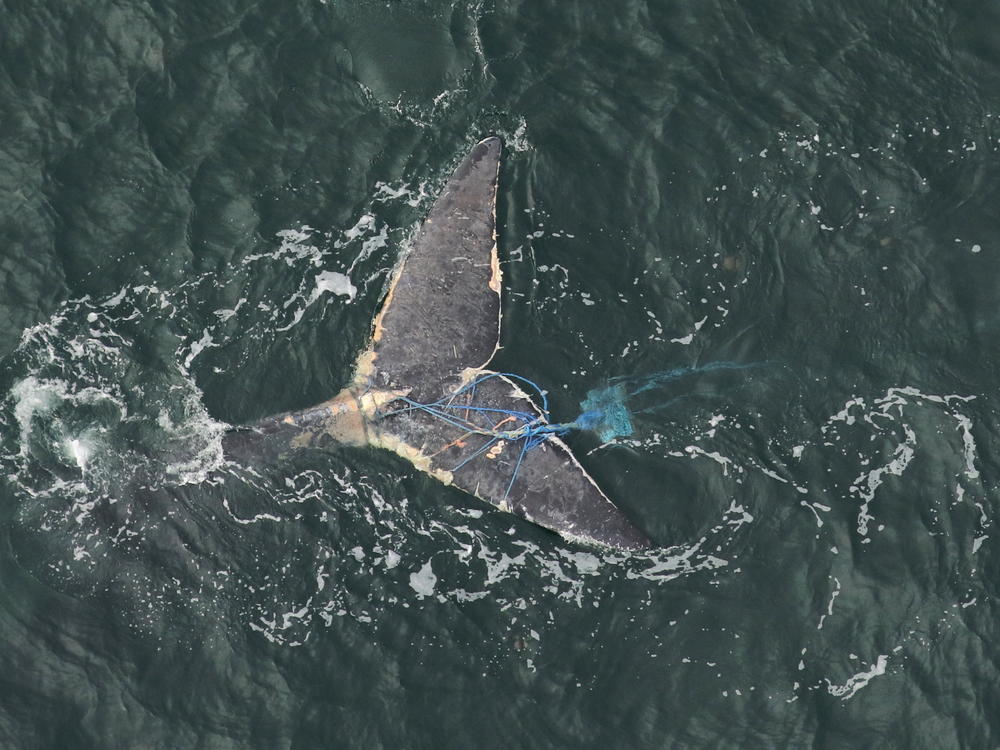
Caption
A right whale spotted off the Georgia coast is severely entangled in fishing gear.
Credit: Clearwater Marine Aquarium Research Institute, taken under NOAA research permit 18786
|Updated: January 26, 2021 11:11 AM
A right whale spotted off the Georgia coast with its tail entangled in fishing equipment has evaded efforts to disentangle and track it. Entanglement is a leading cause of right whale deaths.

A right whale spotted off the Georgia coast is severely entangled in fishing gear.
The outlook is grim for an endangered right whale entangled in fishing equipment off the Georgia coast, according to state wildlife officials.
The whale was first spotted Jan. 11 with rope tangled around its tail along with a fish or shellfish trap. Experts say it is not equipment used locally, so the whale likely became entangled somewhere else.
Wildlife teams from Georgia and Florida have been trying to disentangle it.
But biologist Clay George of Georgia DNR said the whale evaded their efforts.
“It's incredibly frustrating in a case like that when you know that if you're able to disentangle that whale, that might make the difference in that whale surviving and continuing to contribute to the population or not,” George said.
The entangled whale hasn’t been seen for several days. That makes it less likely it can be found and disentangled in time to save its life, George said Friday.
“This many days later, it’s getting to be a lower and lower and lower chance,” he said. “The single biggest variable is whether you’re going to find it again.”
Entanglements are one of the leading causes of death among critically endangered right whales. According to the National Oceanic and Atmospheric Administration, an estimated 85% of right whales have at least once been entangled in fishing gear, which can cut into a whale’s body, cause serious injuries, and result in infections and mortality.
At last count, only around 375 North Atlantic right whales remained, putting them close to extinction.
The whales spend each winter in the waters off Georgia and Florida to have their calves. So far this season, 14 new babies have been spotted.
George said that figure is encouraging, but that the right whales still need to have more calves on a consistent annual basis for their population to recover.